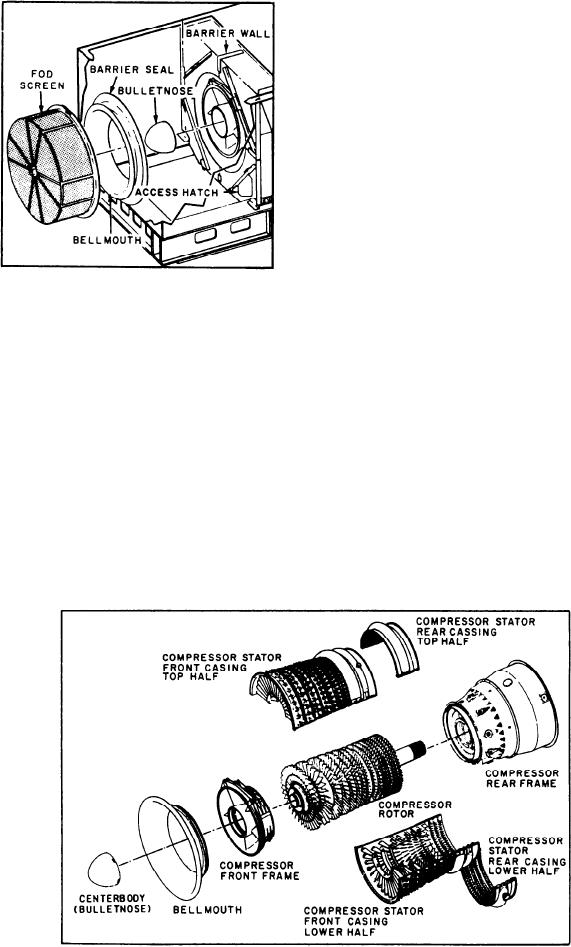
The screen will also prevent items from
entering the engine if the blow-in doors open.
After major work, major intake cleaning, or
anytime the ship is coming out of a shipyard
environment, a special screen is used. It is a nylon
screen that attaches over the metal FOD screen.
The nylon screen will catch particles much smaller
than the metal screen will. You must be careful
not to exceed specified throttle limitations
when using the nylon screen. Exceeding throttle
limitations could starve the engine for air and
cause a compressor stall. NAVSEA issues specific
instructions for use of the nylon FOD screen.
Bellmouth and Bulletnose
The bellmouth and bulletnose (centerbody)
(see fig. 2-21) are mounted on the forward end
of the compressor front frame. These components
Figure 2-21.--LM2500 GTE inlet (FOD screen, centerbody
are used to direct air from the inlet plenum to the
(bulletnose), and bellmouth).
compressor. The surfaces of the two components
have a smooth coat to reduce the turbulence of
FOD Screen
the airflow into the engine. The bellmouth also
contains the water wash manifold. The water wash
The FOD screen, or air inlet screen (fig. 2-21),
manifold is used to inject fresh water and/or a
is mounted on the module barrier wall. The
cleaning solution into the engine. This is done
purpose of this screen is to prevent foreign
when the engine is being motored. This procedure
objects larger than 1/4 inch from entering the
is for maintenance purposes to clean deposits
engine.
from the compressor. The water wash manifold
is supplied by a common water wash system piped
as a ship's system.
The LM2500 GTE compressor (fig. 2-22) is a
16-stage, HP ratio, axial-flow design. Major
Figure 2-22.--LM2500 GTE compressor components.
2-19

